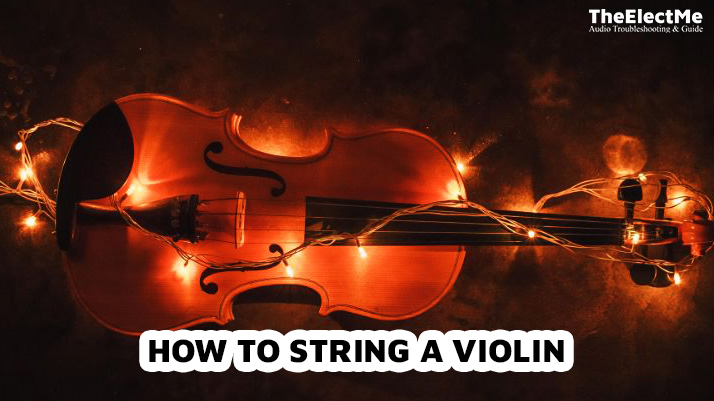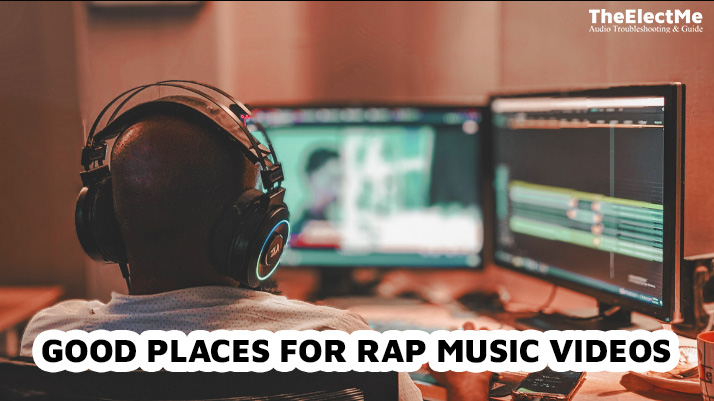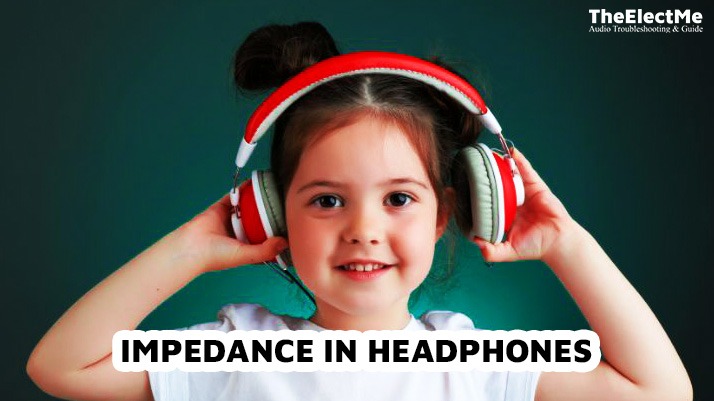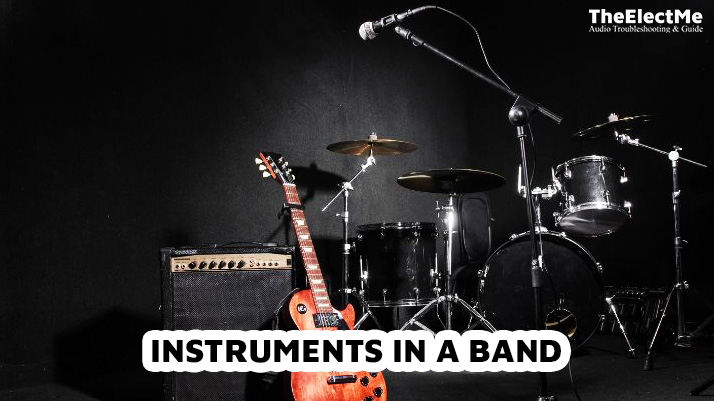White noise machines, earmuffs, and earplugs are some of the most common alternative to earplugs for sleeping. But what if you are looking for something different? Something that offers a more comfortable solution to block out disruptive noises while you sleep?
From soothing sounds to specialized pillows, these alternatives are the solution you’ve been looking for. Say goodbye to uncomfortable earplugs. Get a good night’s sleep with these options from theelectme.com.
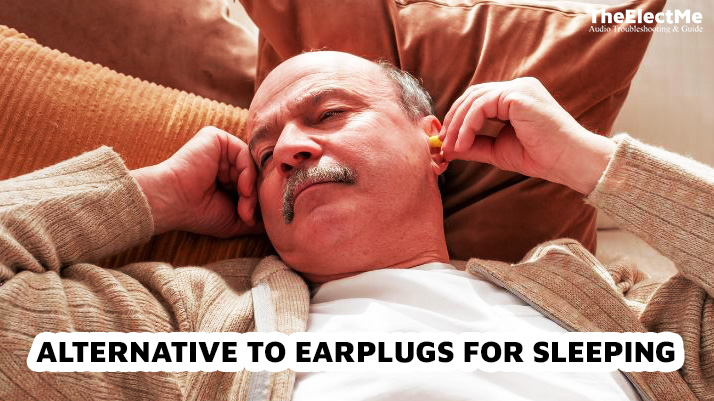
What Are The 7 Best Alternatives To Earplugs For Sleeping?
Earplugs are a go-to solution for many people struggling to sleep in noisy environments. However, they can be uncomfortable or even painful for some users. If earplugs aren’t your thing, don’t worry.
There are other alternatives to help you get the peaceful sleep you deserve. Here are 7 options to consider:
Option 1. White Noise Machine
White noise machines are electronic devices. They emit a constant, soothing sound that helps block out other noises. This can be particularly helpful for light sleepers easily disturbed by noise.
White noise machines come in different varieties, including portable options for travelers.
Pros:
- It creates consistent ambient noise to help drown out disruptive sounds.
- The sound is adjustable, so you can find the perfect level to suit your needs.
- They are easy to use and can be set on a timer to turn off after you fall asleep.
Cons:
- They may be expensive, depending on the brand and features.
- They require electricity to operate.
Option 2. Ear Muffs
What is more portable and cheaper than a white noise machine? Ear muffs. They are headgear designed to cover the ears, protecting them from loud noises.
They have been used for years in industries such as construction and aviation. Ear muffs also become popular among people looking for a more affordable alternative to white noise machines.
Pros:
- They are portable and easy to use.
- They are affordable compared to white noise machines.
- They can protect from loud noises in various environments.
- Some models offer additional features like Bluetooth connectivity for music or phone calls.
Cons:
- White noise machines may be more effective at blocking out sounds.
- Some may find them uncomfortable to wear for long periods.
Option 3. Noise-Canceling Headphones
Noise-canceling headphones use active noise control technology to reduce or eliminate outside noises. They work by producing sound waves that are opposite in phase to the external noise. This cancels out the noise and lets the user hear their audio content more clearly.
Pros:
- Highly effective at blocking out external noises.
- Can be used in both noisy and quiet environments.
- Many models offer Bluetooth connectivity for music or phone calls.
- Can help reduce stress and improve focus in loud environments.
Cons:
- May be more expensive than regular headphones.
- Extended use may cause ear discomfort or pressure for some users.
Option 4: Soundproofing Window
A soundproofing window is a type of window that is designed to block out external noise from entering a room. It typically consists of two or more layers of glass with air or gas insulation. They also often have a seal around the edges to prevent sound from leaking.
Pros:
- Soundproofing windows significantly reduces outside noise.
- Soundproofing windows can also provide better thermal insulation during winter.
- Installing soundproofing windows is usually a quick and easy process.
Cons:
- They can be more expensive than regular windows.
Options 5: Earplugs Designed For Side-Sleepers
Do you have trouble sleeping because the noise from the outside world keeps waking you up? Or perhaps your partner snores loudly, making it difficult for you to get a good night’s rest. If so, then earplugs explicitly designed for side sleepers may be your solution.
They have a unique shape and size that’s ideal for side sleepers. These earplugs fit comfortably in your ear and effectively reduce noise.
So, how exactly do they work? The earplugs are inserted into your ears, creating a seal that blocks out external noise. It also allows you to sleep more soundly.
Pros:
- These earplugs are more effective than regular earplugs.
- They are comfortable to wear and don’t cause discomfort or pain.
- The unique shape and size keep them in place overnight.
- They come in various colors, allowing you to pick one that suits your style.
Cons:
- They can fall out during the night if you move around a lot in your sleep.
Option 6: Soundproof Paint
Soundproof paint is a type of paint that has sound-dampening properties. It reduces noise levels by absorbing sound waves, preventing them from bouncing off surfaces.
This can be especially useful in environments with a lot of external noise. But how does one use soundproof paint? The process is similar to regular painting but with a few additional steps.
First, the walls must be prepped and cleaned thoroughly. Then, a layer of soundproofing primer is applied. This primer contains ingredients that help deaden sound waves. Once the primer is dry, the soundproof paint can be used on top.
Pros:
- Soundproof paint cost-effectively reduces noise.
- Anyone can easily apply it, even with limited painting experience.
- Soundproof paint also has the added benefit of providing insulation.
Cons:
- Soundproof paint reduces noise levels but may not eliminate all sounds.
Related: Impedance In Headphones: How Does It Affect Sound?
Option 7: Using A Beanie
A beanie, also known as a knit cap or winter hat. It is typically made of thick, warm materials such as wool or fleece. Beanies are commonly worn during colder weather to keep the head warm.
But did you know that it can also be used for soundproofing? Yes, that’s right. A beanie can act as a makeshift soundproofing tool in certain situations. Let’s examine the pros and cons of using a beanie for soundproofing.
Pros:
- Easy and convenient: Put on the beanie, and you’re ready.
- Beanies are lightweight and easy to carry.
- A versatile beanie suits the office, library, or home.
- A beanie is a budget-friendly option.
Cons:
- A beanie reduces noise but doesn’t block out all sounds completely.
- Wearing a beanie for a long time can cause itching or sweating.

Let’s move to the next section of why people choose alternative to earplugs for sleeping.
Why Do People Opt For Alternatives To Earplugs For Sleep?
Sleeping is an essential part of our daily routine. Having a good night’s rest is crucial for our health and well-being. However, for some people, falling asleep can be difficult due to external noises such as traffic and snoring partners.
Earplugs come in handy. These small inserts fit into the ear canal, blocking unwanted sounds for better sleep quality. But despite their effectiveness, there are some drawbacks to using earplugs for sleeping.
Firstly, while they do reduce noise levels, they don’t completely block out all sounds. Sudden loud noises may still wake you up or disturb your sleep.
Additionally, wearing earplugs for extended periods can cause discomfort and irritation in the ear canal.
This can lead to frequent ear infections and even affect our hearing in the long run.
Moreover, relying on earplugs for sleep can also create a dependency. Over time, our brain may get used to sleeping with earplugs, making it hard to sleep without them. It can be an issue when traveling or in situations without earplug access.
That’s why people seek alternative sleep solutions, avoiding reliance on earplugs.
Conclusion – Alternative To Earplugs For Sleeping
To summarize, earplugs can be a helpful tool for blocking out noise and promoting better sleep. However, they have potential drawbacks, such as discomfort, irritation, and dependency.
Fortunately, alternative earplugs for sleeping can also help reduce noise and improve sleep quality.
The above blog post is a collaboration of different recommendations from experts and users.
If you struggle with sleep, consult a healthcare professional for the best solution. In addition, practicing good sleep hygiene habits.
Here are some tips to get you started:
1. Avoid caffeine, nicotine, and alcohol close to bedtime.
2. Try relaxation techniques such as deep breathing or meditation before bed.
3. Exercise regularly, but avoid vigorous exercise too close to bedtime.
So, get rid of irritating earplugs and try these alternative solutions for a better night’s sleep.





